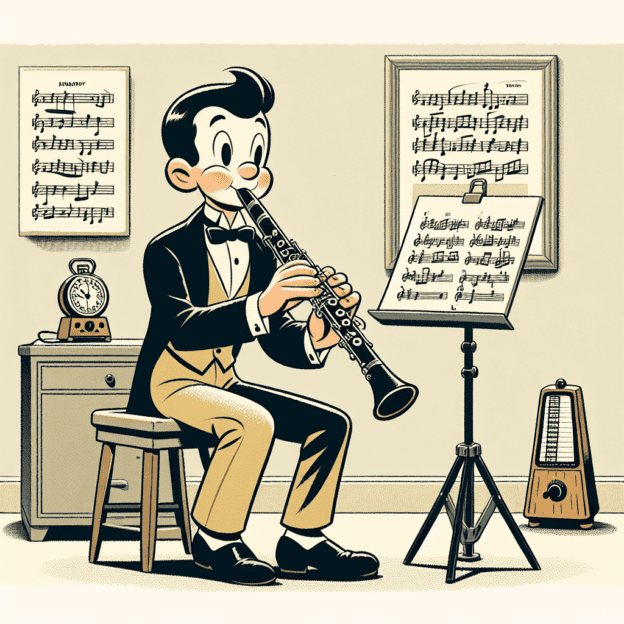Phrasing is a key part of music that helps performers express emotion and meaning. For clarinetists, good phrasing goes beyond playing the right notes; it's about interpreting those notes to enhance the overall musical expression. This guide will help you develop your phrasing skills on the clarinet, so you can captivate your audience with every performance.
Understanding Musical Phrasing
Phrasing is how a musician shapes a sequence of notes into a coherent musical idea. Like a sentence in speech, a musical phrase has a beginning, middle, and end. The way you articulate phrases can greatly affect the emotional impact of the music you're playing.
The Elements of Good Phrasing
Several key elements contribute to effective phrasing:
- Dynamics: Changing volume throughout a phrase adds depth and interest. Use crescendos and decrescendos to enhance your musical statements.
- Articulation: How you attack notes affects their connection in a phrase. Staccato, legato, accent, and slur all influence how a phrase is perceived.
- Tempo: A slight rubato, or flexible tempo, allows for expressive playing. Don't hesitate to adjust the tempo slightly to emphasize points in the phrase.
- Breath Control: Managing your breath improves tone quality and helps shape phrases effectively, letting you breathe without interrupting the musical line.
| Phrasing Element | Description | Example |
|---|---|---|
| Dynamics | Volume changes | Crescendo from piano to forte |
| Articulation | Note attack and connection | Staccato notes followed by legato |
| Tempo | Speed flexibility | Slight acceleration towards phrase peak |
| Breath Control | Air management | Sustaining long phrases without breaks |
Techniques for Improving Phrasing
Practice these techniques to enhance your phrasing abilities on the clarinet:
1. Use Dynamics in Your Practice
As you practice scales or pieces, add dynamic variations. Start a phrase softly, build to a peak, then decrease volume. This exercise builds a strong foundation for musical expression.
2. Focus on Breath Control
Good breath support is essential for phrasing. Try long tone exercises, practicing breath control by sustaining notes while changing dynamics. This helps maintain steady airflow and builds endurance, improving your ability to shape phrases effectively.
3. Utilize Phrasing Slurs
Practice slurring through phrases on your clarinet. Connect notes without rearticulating them. This promotes smooth transitions and helps develop lyrical phrasing. Gently connect every note for a fluid sound.
4. Listen and Imitate
Listen to skilled clarinetists and other musicians known for their phrasing. Notice how they shape their musical lines. Try to copy their phrasing in your practice sessions, incorporating the subtleties you observe.
5. Practice with a Metronome
A metronome helps maintain steady rhythm while focusing on phrasing. Start slow, emphasizing phrase shape before gradually speeding up. This practice improves your ability to keep tempo without sacrificing musicality.
6. Record Yourself
Listening to recordings of your playing can provide useful insights into your phrasing. Listen for moments where the phrase might lose coherence or where dynamics are lacking. This self-review helps identify areas for improvement.
Applying Phrasing Techniques to Repertoire
After practicing phrasing techniques, apply them to your pieces. Here are some strategies:
- Identify Phrasing in the Score: Mark sections in the sheet music where musical phrases begin and end. This helps you understand the overall structure of the piece.
- Emphasize Climax Points: Find the main notes or sections that serve as the peak of each phrase. Highlight these with dynamic contrast or articulation changes.
- Practice with Different Emotions: Play the same phrase with different moods or emotions. Try playing it sad, then happy. This exercise helps you explore the emotional range within the phrasing.
Conclusion
Phrasing on the clarinet blends technique, breath support, and expressive playing. By incorporating these strategies into your practice routine, you can enhance your musical expression and connect more deeply with your audience. Remember, each note contributes to the music's overall story, and how you tell that story makes all the difference.







